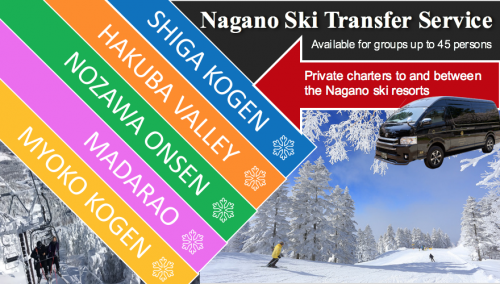SEARCH RESULTS: 2024
Climbing Mount Fuji
Fuji’s official climbing season runs from early-July until mid-September, during which time, all trails and mountain facilities are open. Weather is typically mild and this time and all snow will be gone from the mountain. Visitors have the option of climbing Fuji via different trails including the Yoshida Trail – open from early-July until mid-September – along with the Subashiri, Gotemba and Fujinomiya Trails – open from mid-July until mid-September. We have created this page to give you some information on climbing Fuji and we hope you find it helpful. On this page you will find the following information : — Climbing Mount Fuji — 30 Things to Do Around […]
Nagoya Castle
Nagoya Castle was once the heart of the city and region. Constructed by Shogun Tokugawa Ieyasu, the castle was topped with golden “shachihoko” (tiger fish) and boasted the largest floor space of any tower keep in Japan. The castle, with its golden Honmaru Palace, became Japan’s first castle to be designated a National Treasure. As one of the most important castles in Edo Period Japan (1603-1868), the story of the castle is inextricable from that of the city and its people. Symbols of Nagoya, two golden Shachihoko “tiger-fish” roof ornaments, nicknamed “Kinshachi,” sit atop the main tower keep of Nagoya Castle. Shachihoko are mythical creatures living in the cold northern […]
Atsuta Jingu
Atsuta Shrine is one of the most important shrines in Shintoism. The shrine was founded to house the legendary sword, Kusanagi no Tsurugi—one of the three imperial regalia along with the sacred mirror at Ise Jingu and the sacred jewel at the Imperial Palace. Approximately 9 million people visit this shrine annually to view the 4,000 artifacts which have been donated to the shrine by the Imperial Family, shoguns, feudal lords, and common persons. The shrine complex can be accessed any time of day and admission is free of charge (although the shrine itself will be closed at night). Please note that photography, eating, drinking, and the use of mobile […]
Tokugawa Art Museum & Tokugawa Garden
The Tokugawa Art Museum exhibits over 12,000 items once owned by the Owari clan—one of three branches of the ruling Togukawa family during the Edo Period. The Owari controlled Nagoya, one of the wealthiest regions in Japan during the Edo Period, and as such, they also acquired tremendous wealth. Today, the wealth of the Owari clan can be seen in the museum’s display of their collection including ceramics, paintings, furniture, Noh costumes and masks, along with armor, and swords among other pieces. The collection includes 9 designated National Treasures, 59 Important Cultural Properties and 46 Important Art Objects. Items within the collection are known for their excellent state of preservation […]
SCMAGLEV and Railway Park
An exciting museum for kids and train lovers alike, the SCMAGLEV and Railway Park showcases the history and technological ingenuity of the Central Japan Railways Company. A collection of 39 train cars and locomotives—ranging from older, retired models to ‘maglev’ prototypes—sit on the first floor, while the second floor is dedicated to interactive learning experiences for children and train simulators. Visitors can get a preview of the futuristic ‘maglev’ trains which use superconducting magnets to propel them forward in magnetic levitation and are set to replace the existing shinkansen network. The museum also houses some of Japan’s largest model train sets including highly detailed recreations of Tokyo, Osaka and of […]
Toyota Commemorative Museum of Industry and Technology
Established 100 years after the birth of Toyota Motor’s founder, the Toyota Commemorative Museum of Industry and Technology strives to inspire visitors and share the company’s belief in the importance of “making things” (monozukuri) and “the spirit of being studious and creative.” This interactive museum tells the story of one of Japan’s great companies, and in doing so, reflects Nagoya’s position as Japan’s industrial powerhouse. Exhibitions are separated into the Textile Machinery Pavilion and Automobile Pavilion—sharing the story of how Toyota transitioned from a textile company into the internationally renowned Toyota Motor Corporation. Want to experience Nagoya’s unique culture for yourself? Based in Central Japan and operating all-year-round, we offer […]
Ghibli Park
Ghibli Park is a theme park which brings to life the beloved works of Studio Ghibli. The Park is situated over 7.1 hectares on the former site of ‘2005 World Expo and Aichi Earth Expo Memorial Park’ and allows visitors to discover all of the studio’s secrets—from artifacts and exhibits from past Studio Ghibli movies to kid-sized film studio exhibitions, hands-on learning centers, life-sized replicas, and so much more. How to Buy tickets to Ghibli Park Get a Private Charter to Ghibli Park The park consists of five areas: Hill of Youth (featuring the elevator tower from “Laputa: Castle in the Sky,” “Howl’s Moving Castle,” and a house from “Whisper […]
Inuyama Castle
Inuyama Castle is one of the 12 remaining castles and the oldest original wooden castle in Japan today. Originally constructed in 1537, Inuyama is also one of only five castles to have been designated the status of a National Treasure (along with Hikone, Matsumoto, Himeji, and Matsue castles). And of those National Treasure castles, Inuyama Castle is the only one where you can venture out onto the cornice and observe a beautiful 360-degree view of the surroundings. Overlooking the Kiso River, the surrounding view of the castle changes dramatically with the seasons. The castle town of Inuyama remains much the same as it did during the Edo era. With its […]
Oharaimachi
Leading to the Inner Shrine of the Ise Grand Shrine, Oharaimachi is an 800 meter stretch of traditional buildings, souvenir shops, and restaurants. This pleasant area has been serving pilgrims and visitors to the shrines for a very long time and many traditions remain to this day. Approximately halfway along Oharaimachi’s main street, Okage-yokocho is features reconstructed Edo and Meiji Period buildings. The area is known for its “Ise udon” noodles and “akafuku”—a traditional sweet made from ‘mochi’ and red bean paste. Most stores open early, from 05:00 onward, and close around 18:00 although times vary throughout the seasons—closing earlier in winter and later in summer. Want to experience Nagoya’s […]





